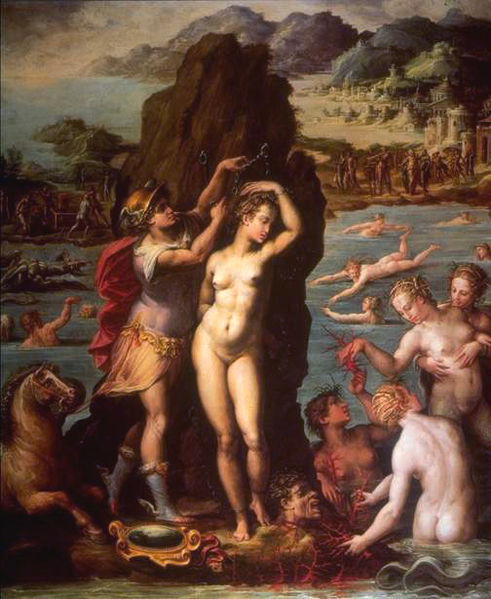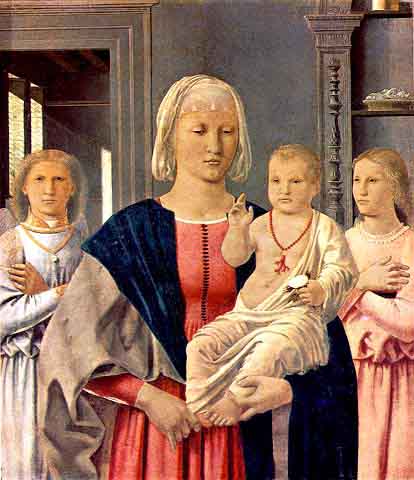.
I asked Barbara of It's About Time to help me with a subject that intrigues me-
Distinctive in portraits.
Distracting in vibrancy.
Heaving symbolism.
Coral.
Artists from Western religious backgrounds, mostly Christian, sometimes used coral in their paintings to protect against illness or evil.
full fathom five thy father lies:
of his bones are coral made:
those pearls that were his eyes
Nothing of him that doth fade
But does suffer a sea-change
Into something rich and strange.
-Shakespeare, The Tempest, Act 1,sc ii
Distinctive in portraits.
Distracting in vibrancy.
Heaving symbolism.
Coral.
Coral Fishers, J.Zucchi c.1560
Artists from Western religious backgrounds, mostly Christian, sometimes used coral in their paintings to protect against illness or evil.
In Western cultures, coral had religious significance before Christianity. The ancient Greeks connected coral with Perseus cutting off Medusa's head, when the gushing blood changed into coral upon contact with the sea. For this reason, they saw coral is a symbol of rebirth.
Persues & Andromeda, Giorgio Vasari,1570, a Renaissance painter's Origin of Coral.
Later, some came to believe that the red of the coral could represent the blood of Jesus Christ & could be construed as protection against his future passion & resurrection. (Of course, without his passion & resurrection, there would be no Christian religion.)
detail of Mantegna, Madonna della Vittoria
in Mantegna's painting Coral is symbolic of Christ's blood sacrifice-suspended above the coral branch foreshadows the crucifixion absolving Man's sin.
In the Mediterranean area, many believed that a gift of coral for a newborn helped protect the baby. Many Mediaeval and Renaissance paintings of the Madonna and Child show the infant Jesus holding a branch of coral or his Mother’s coral rosary.
Madonna de Senigallia, 1470's ,Piero della Francesca
a branch of coral adorns the wall of Carolina Irving's home- no doubt protection against the evil eye.
snippets of coral at home-warding off the evil eye.
1st image A Cabinet with Objects of Art, Johann Georg Hainz
It's about time here
a through exploration of this and other jewels, I recommend Brilliant Effects, by Marcia Pointon.


















